James Whale’s Show Boat (1936): music and race in Golden Age Hollywood
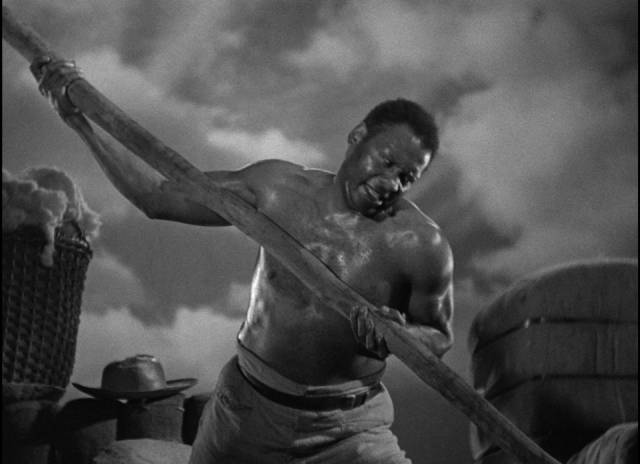
James Whale made twenty features between 1930 and 1941, an average of about two a year, and yet he’s almost exclusively known today for four films he directed between 1931 and 1935. The horror movies he made for Universal, beginning with Frankenstein (1931) and ending with Bride of Frankenstein (1935), were hugely influential and yet his work outside that genre is largely forgotten. The two Frankenstein movies, The Old Dark House (1932) and The Invisible Man (1933) are distinguished from most of the early ’30s horror boom by Whale’s wit, an underlying humour which enriches the films without mocking the genre. These films have a playfulness generally absent from the work of Tod Browning, Robert Florey, Edgar G. Ulmer and their contemporaries. Whether being a gay man has anything to do with this, standing somewhat outside convention and observing the mainstream with a detached, critical eye, is a point worth considering, but it’s undeniable that Whale displayed empathy for outsiders and the oppressed – Boris Karloff’s Creature, for instance, and even Claude Rains’ invisible man, a scientist driven mad by his own researches and gleefully attacking a society of which he no longer feels himself to be a part.
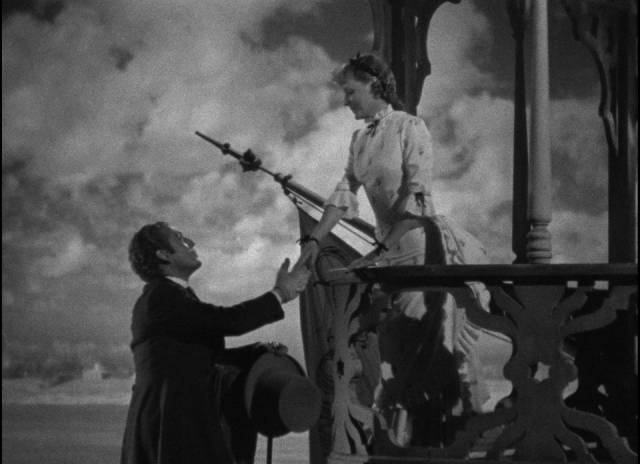
Although best known for these fantasies, Whale began his Hollywood career with horror of a different kind, adapting his successful stage production of R.C. Sherriff’s World War One play Journey’s End into a feature in 1930. That landed him a contract at Universal, where his second feature was also rooted in his war experiences. Waterloo Bridge (1931) was a romantic tragedy about the relationship between a soldier wounded at the front and a bitter prostitute struggling to survive in London. That film’s success gave Whale the clout to pick his own projects – and he chose Frankenstein, which had been in development with Robert Florey as director and Bela Lugosi as the monster (as compensation for being removed from the production the pair were given Murders in the Rue Morgue [1932], itself a troubled project).
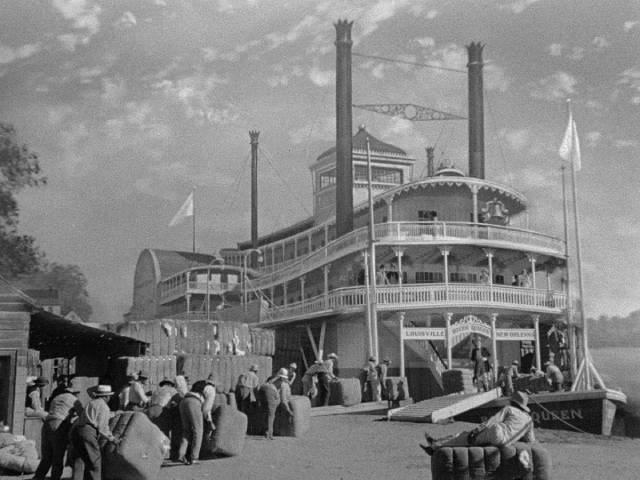
I had always had the impression that, with the success of Frankenstein, Whale made his other horror movies in succession, but actually they were all separated by one or two other projects, an assortment of romantic comedies and dramas. His successful run came to an end in 1937 with the critical and commercial failure of The Road Back, a sequel to All Quiet on the Western Front (1930), which itself had eclipsed Whale’s own debut, Journey’s End. Made as the Nazis were accelerating their plans towards the next war, pressure from Germany caused the Universal executives to take the film away from Whale, and rewrite and re-edit it to make it less critical of Germany’s struggle to recover from the First World War. Whale went on to make seven more movies over the next five years, but he couldn’t quite regain his previous stature.
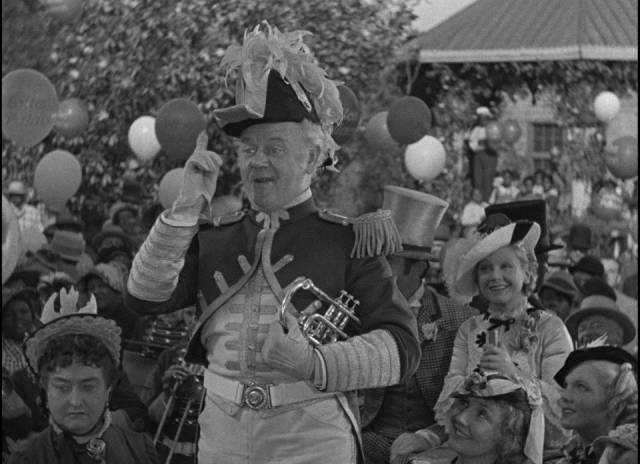
However, before the debacle of The Road Back, he had made his biggest film yet, an adaptation of Show Boat (1936), the 1927 musical by Jerome Kern and Oscar Hammerstein II, itself adapted from the 1926 novel by Edna Ferber. At first, this seems like an unlikely choice for Whale, with its big musical numbers and sprawling multi-generational narrative, but what links it thematically to some of his other work is its treatment of race in turn-of-the-century America; Whale brings that same acute outsider’s eye to a subject with which Hollywood was uncomfortable, and which was generally immersed in cliches and gross stereotypes. Show Boat contains some of those same cliches and stereotypes, but there’s a creative intelligence at work which refuses to accept them at face value. The results are at times uncomfortable, at times moving … and in the end backed away from as if the attempt at confrontation were just too much to sustain within the strictures of the mid-’30s movie business.
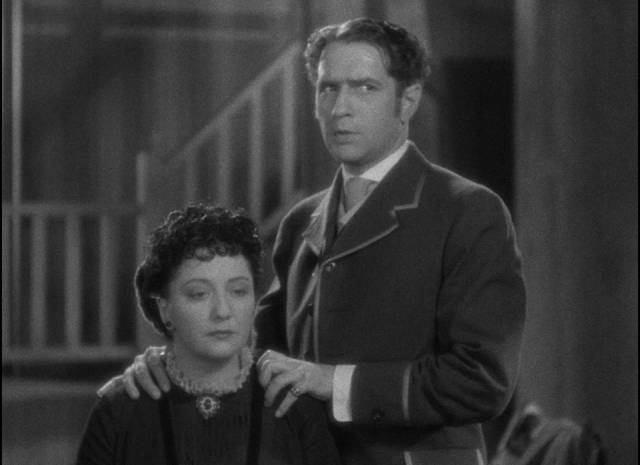
Although Show Boat has a broken structure – the first half is a model of romantic drama told through music, but the second half is a ragged mess of fragments which rush through two decades of the characters’ lives with barely a pause to take in what amount to a series of markers pointing to significant events – it nonetheless stands as one of the decade’s great musicals, one which digs deeper than the usual romantic comedy which predominates in the genre.
The central thread of the narrative is quite straightforward: Captain Andy Hawks (Charles Winninger) and his wife Parthy (Helen Westley) run a riverboat which is a floating theatre, visiting small communities along the Mississippi, bringing audiences 19th Century melodramas. Their daughter Magnolia (Irene Dunne) longs to perform on stage, but Parthy won’t hear of it. In one town, Magnolia meets and falls in love with handsome gambler and con man Gaylord Ravenal (Allan Jones); when the current leading performers suddenly leave the show, Captain Andy overrules Parthy, and Magnolia and Garlord become the new lead players. Parthy never warms to this arrangement and the young couple eventually leave and head North to Chicago. After the dissolute Gaylord abandons Magnolia and their daughter Kim, Magnolia manages to find work as a singer and becomes a success, with Kim growing up to follow in her footsteps. When Kim makes her big debut, Magnolia is reunited with a now contrite Gaylord and the family is made whole again.
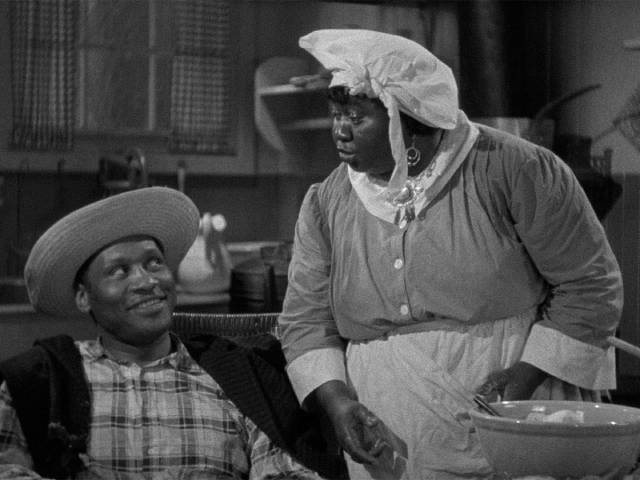
What distinguishes this showbiz narrative from many others like it is the setting in which it begins and the social context this represents. Along the river, Black and White live side by side, their lives inextricably intertwined while White society does everything it can to enforce an impossible ideal of racial purity and segregation. The film’s mechanism for illustrating both the impossibility of such separation and its absurdity is music. The roots of so much American popular music lie in a Black culture which itself grew our of slavery and oppression – jazz, blues, and later rock’n’roll – and this is woven through Kern’s score and Hammerstein’s lyrics.
Early in the film, a key scene illustrates this brilliantly when the show’s lead performer Julie (Helen Morgan) begins singing “Can’t Help Lovin’ Dat Man” in the boat’s kitchen and the cook Queenie (Hattie McDaniel) reacts in surprise because she’s never heard a White woman sing this “coloured” song before. We soon learn that Julie is actually mixed race and passing for white. Her exposure is the film’s most intensely dramatic sequence. The boat’s engineer Pete (Arthur Hohl) has been pressuring Julie, despite her being married to fellow performer Steve (Donald Cook); rejected, he goes to the local sheriff (Charles Middleton) to report her.
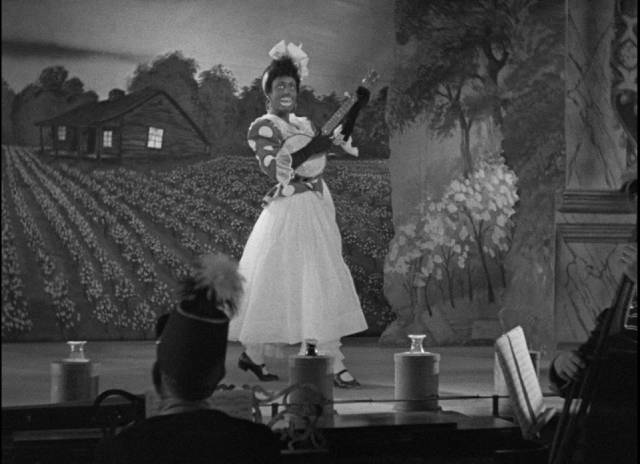
As Julie and Steve rehearse, they’re warned that the sheriff is on his way and, much to the shock of everyone present, he takes out a knife, cuts open Julie’s finger and sucks the blood. When the sheriff arrives and confronts Julie with being Mulatto and in violation of Mississippi’s anti-miscegenation laws, Steve asks if it isn’t true that the state considers just one drop of Negro blood enough to make a person Black. The sheriff concurs and Steve says that he himself has a drop of Negro blood in him. Everyone present, having seen him cut Julie and drink her blood, can honestly confirm that he does indeed have a drop of Negro blood in him, and the sheriff leaves. (It’s obvious that this strategy has been worked out ahead of time, just in case the couple should find themselves exposed.) But with it now being public knowledge that Julie is “coloured”, the pair immediately have to leave to avoid the show being attacked by outraged Whites – thus paving the way for Magnolia and Gaylord to become stars.
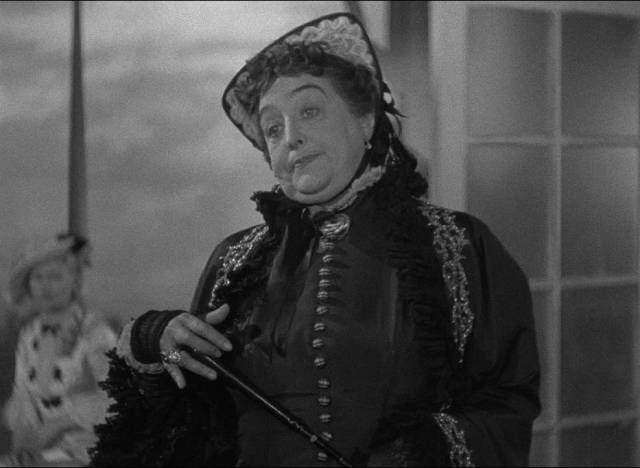
The fact that a Hollywood movie in 1936 would openly present a mixed-race marriage positively and show Steve’s act as a selfless expression of love, is quite remarkable. That the movie would also present the relationship of a Black couple as the warmest and most uncomplicatedly positive, when compared to the comic bickering of Captain Andy and Parthy and the betrayal of Magnolia by Gaylord, is also unexpected, but the marriage of Queenie and Joe (Paul Robeson) seems the strongest and most mutually supportive in this small community.
As played by Robeson and McDaniel, these two both reflect and work against the stereotypes of the time. The first time we see Queenie, she stands up against Pete, defiantly undeferential to the White man. We meet Joe as he sings the musical’s best-known song, “Ol’ Man River”, which lyrically expresses resignation and acceptance of a hard life – “I’m tired of livin’, but I’m scared of dyin'” – but as sung by Robeson comes across more as an ode to endurance. (As his signature song, Robeson modified the words repeatedly over the years to transform it into an anthem of defiance and resistance.)
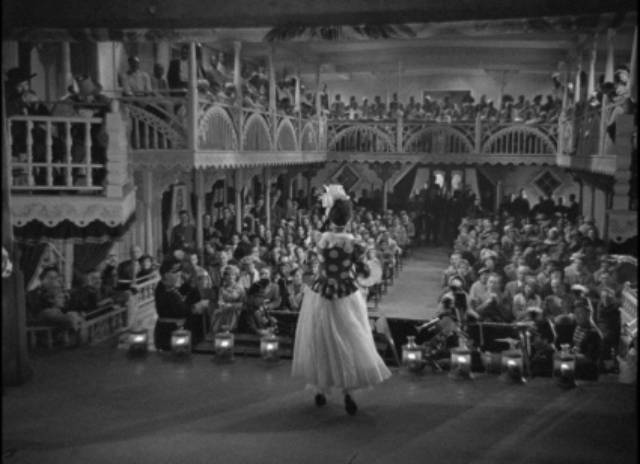
Whale’s staging of this number is breathtaking and displays his full mastery of the camera and editing. He begins with a wide shot of Robeson sitting on the dock, whittling a piece of wood, and as Joe starts to sing, the camera cranes from his right, around behind his back, until it comes to rest in an extreme closeup on his left side, capturing the powerful emotional nuances as he sings about the hard life of a working man in an indifferent, racially divided world (with imagery which undeniably evokes a Christ-like sacrifice). The depth of what he expresses gives more weight to Black lives in this intolerant society than the romantic conflicts of the White characters. While Magnolia and Gaylord’s duet “Make Believe” has a conventional operetta-like quality, Queenie and Joe’s number “Ah Still Suits Me”, sung in the kitchen as they perform mundane tasks, has a comfortable lived-in quality which speaks of a long relationship between equals, again belying familiar stereotypes – though superficially Joe might be seen as lazy and shiftless, his attitude actually mocks that image, disdaining the idea that he ought to be labouring hard for somebody else’s benefit. Meanwhile, Whale contrasts Queenie’s vibrant energy with the image of Aunt Jemima on a packet of flour sitting on the table as she stirs a mixing bowl. These two breathe life and individuality into what would typically be condescending stereotypes.
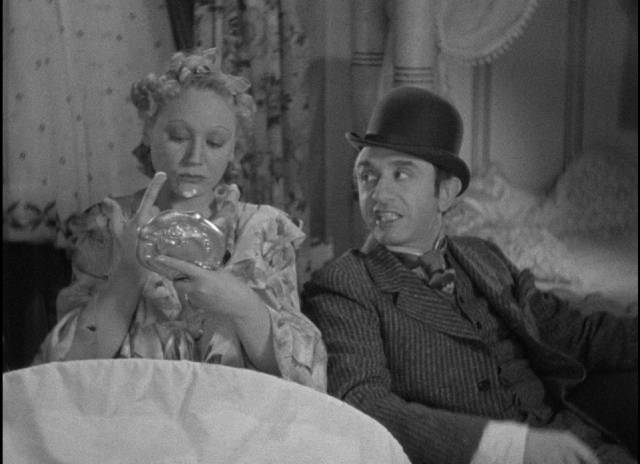
However, the film’s presentation of racial signifiers is by no means unproblematic. As Julie sings “Can’t Help Lovin’ Dat Man”, Magnolia begins to dance, her movements a kind of cartoon representation of stereotyped Black shuffling … a cringey display which undercuts the emotional effect of the song. Later, Magnolia performs “Gallivantin’ Around” in blackface; while this may be read as an ironic comment on the appropriation of Black music by White performers (a subtext running through the film), it can’t help but be viewed today as embarrassing.
Genuinely ironic is that, later, in Chicago, as Magnolia seeks to support herself, she auditions for a theatre manager by singing the “Negro song” “Can’t Help Lovin’ Dat Man”. The manager is prepared to dismiss her immediately, except by chance his current headliner is none other than Julie, now abandoned herself by Steve and an alcoholic. She overhears Magnolia singing, recognizes her, and slips out of the theatre leaving word that she’s quitting – the Black performer stepping aside and making way for the White performer to become a star. Whether or not the musical’s creators were fully aware, Show Boat suggests that America has been built on the exploitation of its formerly enslaved, now oppressed, Black population, with White society suppressing that knowledge in order to take all the credit. By the end, with Kim on the verge of her own success and Magnolia and Gaylord reunited and celebrated, all the Black characters have disappeared.
*
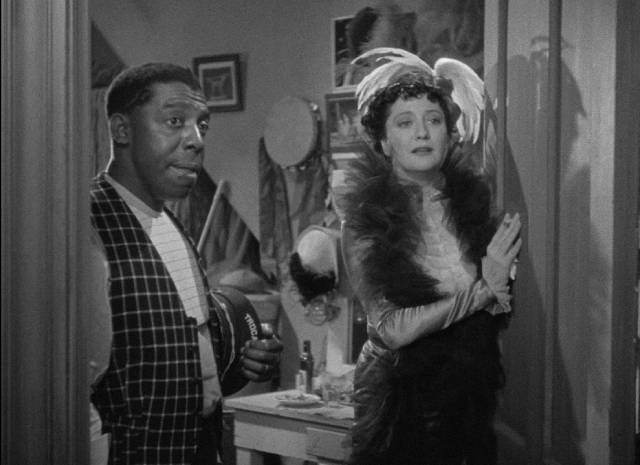
While the treatment of race in Show Boat is complicated, it seems undeniable that it provides a surprisingly rich critique of attitudes which were predominant at the time it was made. And while it has structural issues, particularly in the rushed second half, it is nonetheless one of the finest musicals of the decade; the songs of Kern and Hammerstein are much more than musical filler and Whale displays a brilliant understanding of how to infuse them with dramatic force through cinematic technique. “Ol’ Man River” and, later, Julie’s melancholy rendition of “Bill”, into which she pours all the emotional weight of a life which has not gone where she had hoped, are both enriched by camerawork and editing which support and amplify the expressiveness of Robeson and Morgan’s performances.
As great as his Gothic movies are, Whale rises here to a level of mastery unmatched in the rest of his work. His outsider’s eye, as a displaced gay Englishman, perhaps gave him insight into the underlying social context and a degree of empathy not always available to native-born directors; it seems that he identifies more with Joe and Queenie and Julie than with the more conventional White characters, just as he seemed to identify with Karloff’s Creature more than the thoughtless scientist who created him.
*
Criterion’s 4K restoration from a fine-grain master made from the original negative looks absolutely gorgeous and the mono soundtrack is robust, supporting the music and voices with satisfying depth.
In addition to an archival commentary from music historian Miles Kreuger, the Blu-ray includes excerpts from the previous 1929 version of Show Boat, a silent movie directed by Harry A. Pollard based on Edna Ferber’s novel, which was quickly revised following the success of The Jazz Singer with the inclusion of several songs from the successful Broadway musical (Universal apparently paid a hefty license fee for their use). These provide an interesting comparison with Whale’s version, all filmed in a perfunctory way with the camera looking at the stage in wide shot – Jules Bledsoe’s rendition of “Ol’ Man River”, while vocally similar to Robeson’s, lacks the dramatic force of the latter’s performance partly because it’s merely recorded by a static camera rather than interpreted visually. The most interesting comparison, though, is between the two versions of Helen Morgan’s “Bill”; in the 1929 performance, she sits on the piano and her body language expresses all the emotions while in the 1936 version, Whale uses multiple angles to vary our distance from Morgan as she goes through the emotional shifts in the song as well as incorporating the audience of theatre staff and fellow performers who gather to listen as she sings. It’s a fine illustration of what a filmmaker can do to expand on the dramatic and emotional effect of the material.
Also included are twenty minutes of scenes from the silent version, much of which was shot out on a real river rather than a backlot, giving it an impressive sense of scale.
There are new interviews with Whale biographer James Curtis and academic Shana L. Redmond, the latter addressing the depiction of race in the film, plus an archival documentary about Paul Robeson and the impact on his career of his political and civil rights activism; while being lauded around the world as an artist and blacklisted at home as a radical, his gradual transformation of “Ol’ Man River” into a personal anthem is a fascinating study in the mutability of meaning in art.
There are also two one-hour radio adaptations featuring some of the film’s cast members, and the booklet has an essay by critic Gary Giddins which focuses on the music and its place in American popular culture.
Comments